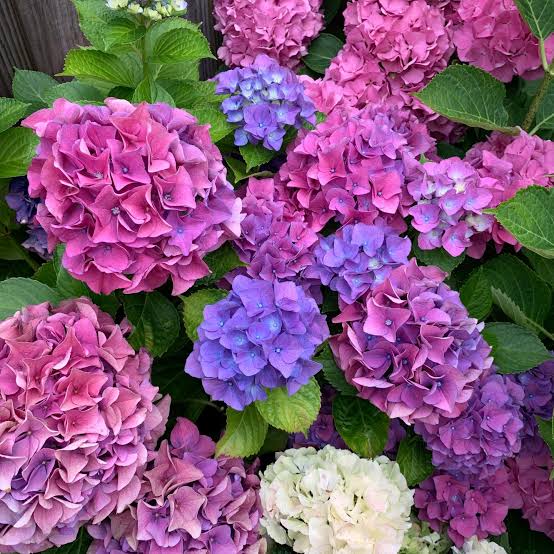Few plants can transform a garden quite like hydrangeas. With their large, cloud-like blooms and stunning colors ranging from soft pastels to vivid blues and pinks, hydrangeas are a gardener’s dream. Whether you’re a beginner or a seasoned plant lover, learning how to plant hydrangeas properly will help you grow healthy, flourishing shrubs that make your garden look magical.In this guide, we’ll explore everything you need to know — from choosing the right variety to planting, caring, and keeping those blooms gorgeous season after season. So, let’s dive in and transform your garden with how to plant hydrangeas!🌸 Why Hydrangeas Are Perfect for Any GardenHydrangeas are loved for their versatility, resilience, and breathtaking color palette. They’re suitable for both sunny and shaded gardens, come in a wide range of shapes and sizes, and can even change color based on your soil’s pH level.Here’s why they’re a must-have in your garden:✔️ Long blooming season – Flowers last from late spring through fall.✔️ Low maintenance – Once established, they thrive with minimal care.✔️ Variety of colors and shapes – Perfect for any garden style.✔️ Pollinator-friendly – Attracts bees and butterflies.🌼 Grow smarter: Hydrangeas aren’t just pretty — they’re also fantastic for cutting gardens and floral arrangements!🌿 Step 1: Choose the Right Hydrangea VarietyThere are several types of hydrangeas, each with its own beauty and care needs. Here are the most popular ones:🌸 Bigleaf Hydrangea (Hydrangea macrophylla)Known for large, round blooms in pink, blue, or purple.Color changes depending on soil pH (acidic = blue, alkaline = pink).Ideal for part shade locations.🌿 Panicle Hydrangea (Hydrangea paniculata)Cone-shaped flowers that start white and age to pink or green.Very hardy and tolerates full sun.💜 Smooth Hydrangea (Hydrangea arborescens)Native to North America; produces large, white blooms.Excellent for shady areas and low-maintenance gardens.🌼 Oakleaf Hydrangea (Hydrangea quercifolia)Distinctive oak-shaped leaves and cone blooms.Stunning fall foliage in shades of red and bronze.💡 Grow smarter: Choose your variety based on sunlight, climate, and desired bloom color.🌱 Step 2: Pick the Perfect Planting SpotHydrangeas thrive in well-drained, fertile soil with access to morning sun and afternoon shade.Best conditions:🌞 Light: 4–6 hours of sunlight daily (avoid harsh afternoon sun).💧 Soil: Moist, rich in organic matter, and drains well.🌿 Space: Allow at least 3–10 feet between plants depending on the variety.Avoid planting near trees that compete for nutrients and water.🌸 Grow smarter: East-facing gardens are ideal — gentle morning light keeps hydrangeas happy!🌷 Step 3: How to Plant Hydrangeas🪴 What You’ll Need:Hydrangea plant (nursery or potted)Garden spadeCompost or organic matterMulch🌱 Steps:Dig the Hole:Dig a hole twice as wide and just as deep as the plant’s root ball.Prepare the Soil:Mix garden soil with compost or organic matter to boost nutrients.Plant:Place the hydrangea in the hole so the top of the root ball is level with the soil surface.Backfill and Water:Gently fill in the hole and press down lightly. Water deeply right after planting.Mulch:Add a 2–3 inch layer of mulch around the base to keep roots cool and retain moisture.💧 Grow smarter: Hydrangeas prefer consistent moisture — never let them dry out completely!🌼 Step 4: Watering & Feeding Hydrangeas💦 WateringWater 2–3 times per week during dry spells.Deep watering is best — it encourages strong root growth.Avoid watering leaves directly to prevent fungal issues.🌿 FeedingUse a balanced, slow-release fertilizer in early spring.For blue blooms, apply acidic fertilizer (like for azaleas).For pink blooms, use lime to make the soil more alkaline.✨ Grow smarter: Always test your soil before adjusting pH — over-fertilizing can damage roots.🌸 Step 5: Pruning HydrangeasPruning helps your hydrangeas stay healthy and produce more blooms — but timing is key!Bigleaf & Oakleaf: Prune after flowering in summer.Panicle & Smooth: Prune in late winter or early spring before new growth.Remove old, dead wood and shape the plant lightly.🌷 Grow smarter: Never prune hydrangeas too hard — they may not bloom the following year.🌺 Step 6: Seasonal Hydrangea Care🌸 Spring: Feed and mulch your plants. Remove dead stems.🌞 Summer: Water consistently and enjoy blooms.🍂 Fall: Stop fertilizing; let the plant prepare for dormancy.❄️ Winter: Add mulch or cover the base in cold regions for protection.🌿 Common Hydrangea Problems (and How to Fix Them)Problem Cause Fix🌸 No blooms Pruned too late / frost damage Prune at the right time; protect from frost🍂 Yellow leaves Overwatering or poor drainage Improve soil drainage🐛 Pests Aphids or spider mites Use neem oil or insecticidal soap🧊 Wilting Too much sun or heat Move to partial shade and water regularly💡 Grow smarter: Healthy soil and regular care prevent 90% of hydrangea issues!🌺 Styling Ideas: How to Use Hydrangeas in Your Garden🌸 Borders & Hedges: Line pathways or fences for instant elegance.🌿 Mixed Flower Beds: Pair with roses, peonies, or hostas.🌼 Containers: Grow compact varieties on patios or balconies.🌷 Cut Flower Displays: Hydrangeas make stunning indoor arrangements.✨ Grow smarter: Mix different hydrangea varieties for a multi-season bloom display!🌼 ConclusionHydrangeas are the ultimate garden showstopper — graceful, colorful, and surprisingly easy to grow. With the right planting spot, care, and pruning habits, you can enjoy their spectacular blooms year after year.So don’t wait — grab your gardening gloves and transform your garden with how to plant hydrangeas today! Whether you want a charming cottage look or a polished landscape design, these timeless flowers will fill your outdoor space with beauty, texture, and joy. 🌸🌿💧

